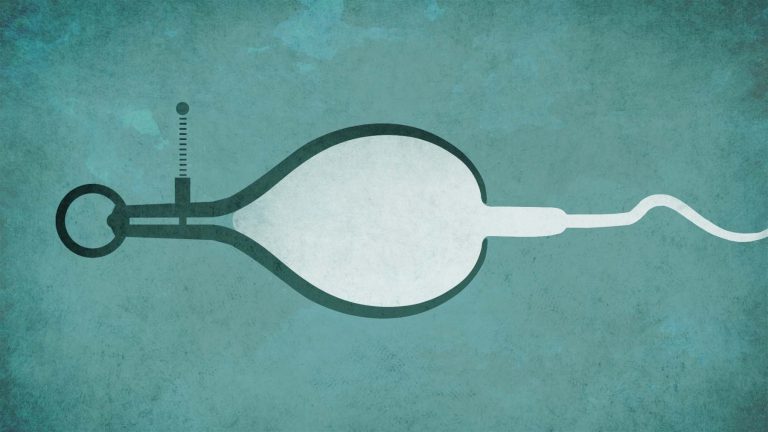Helping patients to understand their fertility is a critical part of supporting their pregnancy goals. OB/GYNs, reproductive endocrinologists, urologists, and other fertility specialists play a huge role in guiding their patients through what can be a highly uncertain and emotional time. Of course, before diving into infertility treatment options or therapies, it’s crucial to get the full picture of a couple’s biology–their individual reproductive systems, hormonal imbalances, and overall health. But, the key here is to have an equally thorough look at both the male and female sides to fertility. Typically females undergo extensive testing when they’re having trouble getting pregnant. However, while 50% of infertility can be attributed to males, the amount of testing done (or even available) is not as equal. Here, we’ll explain why it is so important to make sure that male fertility tests are included in a couple’s evaluation, what the options are, and how to interpret results.
Understanding the role of male factor infertility
While infertility itself is a widely known issue in the medical community, healthcare providers may not realize the importance of male fertility tests when starting to evaluate a couple who is having trouble conceiving. In fact, one in every 10 men in the United States experiences infertility. A diagnosis of infertility is usually given after a couple is trying to conceive naturally for one year with no success (or 6 months if the female is over 35). In the case of male factor infertility, this can manifest in a variety of ways. There can be a problem with sperm production, sperm count or motility, sperm function, or a physical blockage. In all cases where one or more of these issues are present, it will be more difficult–if not impossible–to get pregnant naturally.
Male infertility can be caused by a variety of factors. Certain circumstances like genetic disease, medical conditions, cancer treatment, or even hormonal disorders can impact sperm production. Unhealthy habits, age, obesity, exposure to toxins, drug and alcohol use, and medications can also have an effect on sperm health. Fortunately with some of these more temporary causes such as drug use, weight, and habits, a change in lifestyle can improve fertility over time.
Benefits of thorough male fertility testing
The problems caused by male factor infertility may be overlooked, or even assumed to be coming from the female, if proper testing isn’t done. And without knowing the true cause of the inability to conceive, it will be even more difficult to treat. Any number of things may be going wrong within the male reproductive system. Low sperm count can lower the chances of sperm reaching the egg.

Similarly, poor motility makes it more difficult for sperm to find its way to the egg. Abnormally shaped sperm may not be able to penetrate the egg effectively. Sperm with modified DNA or other genetic abnormalities also may not be able to function correctly. By identifying these issues early on, healthcare providers can determine more personalized treatment plans faster, without spending as much time on trial-and-error.
Another benefit of identifying male factor infertility issues is that it may help women to avoid unnecessary procedures. When male infertility is overlooked, females often become the focus and may undergo extensive testing, months of hormonal injections, or invasive treatments. Not only is this straining on the body, but it typically comes at a high emotional and financial cost as well. And when the biological clock is ticking, spending months or longer on procedures that won’t work can make it even more difficult to conceive later on.
Types of male fertility tests
Typically, a standard semen analysis will be completed as part of an initial workup. This test will measure sperm count, volume, concentration, motility, and morphology. Each has its own range of a “normal” level, listed below.
Sperm Count: Amount of sperm cells in ejaculate sample (39–928 million)
Semen Volume: Amount of semen in the sample (1.5–7.6 mL)
Sperm Concentration: Number of sperm per millimeter of semen (15–259 million per mL)
Sperm Morphology: Size and shape of the sperm (4–48%)
Sperm Mobility: Ability of the sperm to swim toward an egg (40–81%)
The semen analysis is seen as the baseline for men’s reproductive health. If a male falls within normal ranges, he’s often considered to be fertile. However, studies show that semen analyses are limited in predicting pregnancy outcomes. While some of these parameters can be correlated with time to natural pregnancy, a semen analysis generally is not able to measure the true fertilization potential of the sperm. This is partially due to the fact that complex changes take place once the sperm is in the female reproductive tract, which a semen analysis doesn’t necessarily account for.
There are other tests available that can help to supplement standard semen analysis tests and shed more light on a male’s fertility potential.
Basic Tests
Blood test: Shows whether hormones levels of testosterone, LH, FSH, and prolactin are optimal.
Urine analysis: Shows if white blood cell count is high, which would indicate infection, or if there is sperm in the urine, which would indicate an issue with ejaculation.
Sperm Abilities
SpermQT (sperm quality test): Examines DNA modification within the sperm head to measure sperm function, assessing multiple cellular pathways some of which are specifically related to spermatogenesis and embryo development.
DNA Fragmentation: Measures single or double stranded breaks in the chromosomes, recommended in cases of recurrent pregnancy loss.
Sperm agglutination: Uses a microscope to observe whether sperm are clumping together, which would prevent them from swimming through the cervical mucus.
Hemizona assay: Tests whether sperm can penetrate the outer layer of the egg using a non-viable human egg.
Acrosome reaction: Determines if sperm heads are able to undergo chemical changes that allow it to dissolve an egg’s outer shell.
Hypo-osmotic swelling: Uses a special solution to evaluate the sperm tail’s ability and role in penetrating the egg.
Production and Blockages
Testicular biopsy: A small section is removed from the testes tubules and examined to see how well sperm are being produced.
Vasography: An x-ray exam can illuminate if the vas deferens has a blockage or leakage of sperm.
Ultrasonography: Uses sound waves to generate a picture of internal tissues, helping to locate damage or blockages in the prostate, seminal vesicles, and ejaculatory ducts.
Best practices for incorporating male fertility tests into infertility evaluations
Fertility tests can be useful for anyone who wants to know more about their reproductive health in advance of trying to conceive, but they are especially useful for couples who are struggling to get pregnant or who may be diagnosed with unexplained infertility. There can be more specific goals when testing, though, such as:
Identifying fertility problems that can be solved
Identifying problems that can only be solved using Assited Reproductive Technology (ART)
Identifying problems that have no current possibility to be solved and where donor sperm or adoption may be necessary
Identifying other medical conditions that may be causing infertility
Identifying genetic causes of infertility that could prevent treatments or ART from working, or that could affect offspring

The American Urological Association (AUA) and the American Society for Reproductive Medicine (ASRM) recommend taking a detailed history of a patient’s sexual habits as well as at least one semen analysis for an initial evaluation. Further testing is then recommended in men whose history includes risk factors for infertility or who receive abnormal results in the semen analysis.
However, there are numerous advantages and few disadvantages to doing a more thorough screening of male partners earlier on. By including physical examinations and sperm quality/functional testing in initial workups, it will enable healthcare providers to make more accurate diagnoses and, subsequently, more effective and personalized treatment plans.
Addressing male infertility
As healthcare providers, it is critical to have all the information possible when making decisions about patient care. Fertility is no different. When it comes to the differences in male and female factor infertility, both can have equally detrimental effects on a couple’s ability to get pregnant. Evaluating men’s reproductive health should occur early in the process, and in fact as early as possible to give the best chances of conceiving.







